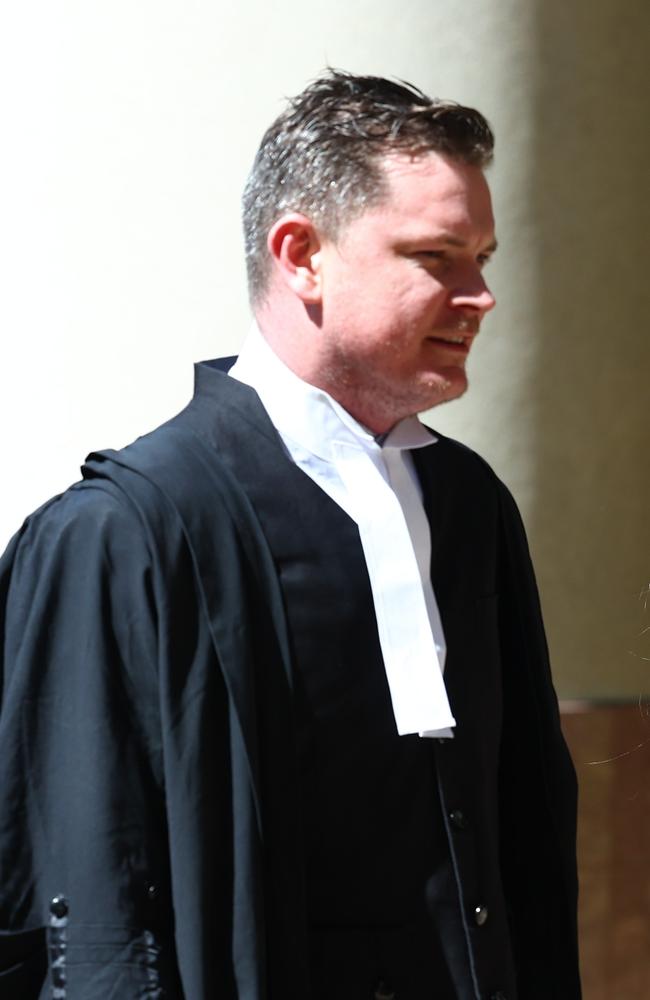Sophie’s Law tested in Nilisi Kaniki murder case Supreme Court ruling
A Supreme Court Justice has delivered a critical ruling in a murder case on Friday morning which sets previously-untested limits for the recent “Sophie’s Law” legislation changes.

Logan
Don't miss out on the headlines from Logan. Followed categories will be added to My News.
A Supreme Court Justice has delivered a critical ruling in a murder case on Friday morning, which sets previously-untested limits for the recent “Sophie’s Law” legislation changes.
The law, introduced last September, recognised unborn children killed as a result of criminal conduct.
As a result, courts were now required to treat their death as an aggravating factor during sentencing.
Justice Kerri Mellifont delivered a ruling on June 14 that concluded the legal definition of an “unborn child” should apply to both embryos and foetuses.
The ruling came about in the ongoing murder case of Nilisi Kaniki, who was charged in 2019 with murdering his partner Selma Adem Ibrahim.
Mr Kaniki has since been charged with unlawful assault of a pregnant female destroying the life of a child before its birth (DV) – relating to the same incident.
The Brisbane Supreme Court heard at a hearing on June 13 that Ms Ibrahim had been pregnant with a 40-day-old embryo at the time of her death.
Defence barrister Jacob Robson argued there was effectively no case for the prosecution to take the destruction of a child charge to trial as they had no proof of the embryo’s life before the assault.
The court heard there was evidence the embryo might not have been viable if it had proceeded to the end of the gestation period.
Mr Robson submitted that amendments could be made to that legislation to limit the age of an unborn baby to which it applied.
He argued that the meaning of “child” under the legislation should be interpreted to mean a foetus.
Crown prosecutor Nathan Crane acknowledged it would be difficult for the Crown to prove that the law would apply prior to there being an embryo formed.
But he submitted that the definition of child, in the sense of an unborn child, included both embryos and foetuses.

Mr Crane referenced statements made by former Member for Gladstone Liz Cunningham when introducing abortion law amendments made in 1997.
The amendment removed the presumption that legal protections applied only to an unborn child aged at least 24 weeks.
“Offenders should count the cost before they do something that is wrong,” Mr Crane said.
“If they kill a child … the viability of the child has been terminated by the assault, irrespective of the age of the baby.”
“The importance of a child does not suddenly begin at 24 weeks.”
Mr Crane said Ms Cunningham’s phrasing suggested “fairly distinctly” that her intention by using the word child was that it included lifeforms younger than 24 weeks.
But Mr Robson said that an instance where Ms Cunningham used the phrasing “foetus or a child – whatever you want to call it” demonstrated her intention that child meant foetus specifically.
While delivering her verdict on Friday, Justice Mellifont said she would proceed on the basis that pregnancy commenced when an embryo was formed and that it would then be considered a foetus at about 10 weeks.
She said the life form in this particular case had been between six to eight weeks formed and was therefore considered an embryo.

Justice Mellifont noted Justice Henry’s decision in the case of the Crown against Waigana established that the law did not include any stipulations regarding the “likely fate” of an unborn child.
“The use of the word child to describe the life form with which the mother is pregnant does not suggest the life form must be capable of existence independently of the mother,” she said.
Justice Mellifont said the key question for her to consider was therefore not whether the “life form’’ in this case would have been viable.
She said it was instead whether the definition of unborn child under the law meant a foetus or if it meant a life form starting at the commencement of pregnancy – which would include an embryo.
Justice Mellifont noted Ms Cunningham’s statement which read: “The child is an important addition to (a family) from day one.”
“The value of the child is no less diminished because the pregnancy has not progressed to 24 weeks,” she said.
Justice Mellifont also considered criticisms of the amendment at the time, which argued it would cause the courts practical issues in cases involving life forms in their early stages.
But she concluded that the “foetus or child” comment was merely an example, not an intentional limitation to the amendment.
“I do not find that parliament’s intention in passing the amendment was seeking to avoid the parts of the matter relied upon by the defence,” Justice Mellifont said.
“Rather, I find that the parliament's intention – that is the policy, purpose underpinning this amendment – was to address the ‘mischief’ of the occasion of harm via an assault on a pregnant woman to a life form forming in her at any age.”
“That is the strong message which comes through the Member for Gladstone’s speeches.”
Justice Mellifont dismissed the defence’s application for a no-case finding on the destruction of a child charge.
Mr Kaniki is remanded in custody at Arthur Gorrie Correctional Centre.
A trial date has not yet been set.
Originally published as Sophie’s Law tested in Nilisi Kaniki murder case Supreme Court ruling



